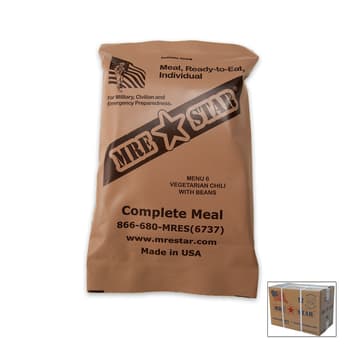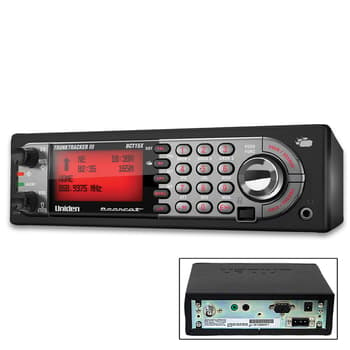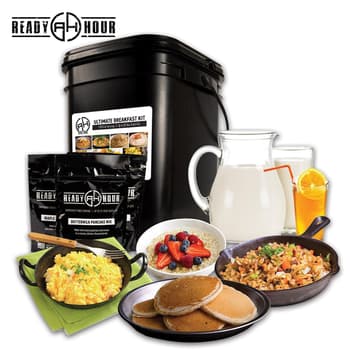It’s Not Too Late For Hurricane Preparedness

By Adelia Ladson
Hurricane Season comes every year and runs, in the United States, from June 1 through November 30. Areas like coastal regions are affected more than others but a hurricane’s reach can be far, and the most unlikely areas can suffer hardships and damage, too. Even if you are not in a hurricane’s path, the fall-out from it like far-reaching wind and rain bands can cause havoc, including flooding and loss of electricity for an extended period. It never ceases to amaze me the number of people who still aren’t prepared for a hurricane, especially, those who live in areas that are hit year-after-year. If you are one of those folks, it’s not too late to prepare for hurricane season.
What You Need
The Federal Emergency Management Agency (FEMA) says that you need to have an emergency kit with supplies for every member of your family to last for several days. The agency suggests having a full emergency kit for home and a smaller kit for evacuation. The contents of both kits need to be kept up-to-date and everyone in the household should know their locations. Here’s the basic supplies that should be included in each kit.
Home Emergency Kit
For your home emergency kit, a good-sized duffle bag works well. It’s important to have everything that you need in one place so that you can put hands on it quickly. There are items that should be pulled out ahead of time in the hours before a hurricane reaches your area.
Water
One of the first things that you need to do is to make sure that there is safe drinking water for you and your family. You need one gallon of water per person for at least three days. A clean, reliable source of water or a way to make the water on-hand safe to consume is a necessity since power outages could last for a few days. Having some kind of water filtration system is your best bet because it allows you to source water from anywhere, even your front yard or street. The Membrane Solutions Three-Liter Gravity Water Filter Bag And Straw has a three-stage filtration system and is easy to use. Just pour water in the top of the bag, hang it up and clean water comes out of the bottom, with gravity doing all the work. Before the hurricane, fill-up the Alexapure Emergency Water Bank, which has a capacity of 65 gallons that will stay fresh for up to 16 weeks. Both of these hydration tools will fold-down to fit in your emergency bag.
Food
The next thing that FEMA has on its list of basics for your emergency kit is several days of non-perishable food for your household. Once again, as you know, electricity or the lack of is going to be the enemy. Now, most of us have quite a stock of canned goods in our homes. So, generally, if the power goes out for a length of time, we can survive on what we’ve got in the pantry. There are some emergency food items that you can add from Ready Hour to supplement what you have. These items require no refrigeration yet give you food items that usually need to be kept in the fridge. Milk and eggs are an important staple for breakfast and as ingredients for other meals. Ready Hour Powdered Whey Milk has 93 servings in the can and a 20-year shelf-life unopened, and one year once the can is opened. There are the equivalent of 72 eggs in the Ready Hour Whole Egg Powder can, which has a 10-year shelf-life. So that you don’t have to completely rely on the cans of tuna and chicken in your cupboard, consider adding the Ready Hour Freeze Dried Beef Case Pack to your emergency kit. It contains six pouches of freeze-dried beef, which contain four servings each of beef. Since the beef is immediately frozen during the freeze-dried process, the vitamins and minerals stay packed inside of the package, and the fresh taste is maintained. The pouches have up to a 30-year shelf-life unopened and an up to one-year shelf-life after opening.
Radio
The next thing that you need in your home emergency kit is a good weather radio so that you know where the worst of the storm will be and when it will be there. Having real-time information is important to keep your family safe because you need to know if you need to evacuate and how long you may have before the hurricane hits. The BugOut NOAA Weather Radio and Device Charger is perfect for your hurricane survival kit because, if you lose power, it can still be charged with its integrated solar panel or dynamo hand crank and charge your smart phone, too. The radio will send you alerts, specifically for the area you are in, directly from the National Weather Service, and if you have to evacuate, it goes where you go! It is important to remember that a “watch” issued means the weather conditions are favorable for a dangerous weather event within the next 12 to 36 hours and a “warning” issued means the dangerous weather event is occurring or will be in the next 30 minutes to an hour. Just having a weather radio in your home, regardless of the weather situation, is a good investment and the Uniden Bearcat 500-Channel Scanner is one of the best.
First Aid Kit
FEMA suggests that you have a first aid kit as part of your hurricane preparedness kit, but I really think you should always have a first aid kit in your home, vehicle and camping or hiking gear. Having the supplies that you need, all in one place, when you have a medical emergency, is one sure way to take care of your family. I really like the Elite First Aid Kit, which comes in a hard case with a handle. This kit includes a total of 66 items that will provide aid for up to 16 people, including a range of first aid creams, wipes, a pair of gloves, ice pack, tweezers, scissors, bandages and more.
Misc.
Other supplies to have in your hurricane home emergency kit that FEMA suggests are an emergency whistle and a good, dependable flashlight and extra batteries, which, honestly, NEBO is the way to go! We have a variety of them to choose from and they are absolutely built for weather emergency use. The one that I favor is the Nebo Rechargeable Slyde King Flashlight because it functions as both a flashlight and a red work light that can also be used as a flashing signal. It’s powered by a rechargeable battery that has a recharge time of 4 to 8 hours, depending on the output of the USB port, and the USB-C to USB cable comes with it. Also add to your kit duct tape, plastic sheeting and a wrench or pliers to turn off utilities. Feel free to add more items you think you would need. Afterall, it will be you and your family using them. There’s no such thing as being too prepared!
Shop Products Here:
- Membrane Solutions Three-Liter Gravity Water Filter Bag And Straw
- Alexapure Emergency Water Bank
- Ready Hour Powdered Whey Milk
- Ready Hour Whole Egg Powder
- Ready Hour Freeze Dried Beef Case Pack
- BugOut NOAA Weather Radio and Device Charger
- Uniden Bearcat 500-Channel Scanner
- Elite First Aid Kit
- Emergency Whistle
- Nebo Rechargeable Slyde King Flashlight
Evacuation Emergency Kit
For your evacuation emergency kit, get a nice sized, sturdy pack or bag that is easy to grab and go, if you and your family actually have to evacuate.
Water
The Membrane Solutions Three-Liter Gravity Water Filter Bag also is well-suited for your go-bag as it works anywhere. Another item to consider is a Membrane Solutions Personal Water Filter Straw for each member of your family. It has a four-stage filtration system, fits in the palm of your hand and it comes with a neck lanyard. Just put the bottom end of the filter straw into any source of water and drink from the top just like using a straw.
Food
When you evacuate, you need at least a three-day food supply, just in case you either end up in a makeshift shelter or stuck on a congested highway. Wouldn’t it be just a relief to be able to grab something quickly that will sustain you until you get to a more permanent residence or a hotel? I recommend a Ready Hour 72-Hour Kit for each member of your family. The kit contains easy-to-prepare breakfast, lunch and dinner meals packaged in heavy-duty, resealable pouches with zipper tops. But, remember, you do need access to hot water to reconstitute the meal pouches.
Radio
If you do have to evacuate, like I said above, the BugOut NOAA Weather Radio and Device Charger can just be dropped into your evacuation emergency kit. Another good option is the BugOut Portable Weather Scanner Radio. Comfortable and compact, it easily fits in your hand and has a telescopic antenna for field receiving so that you can catch a signal anywhere, even AM/FM broadcasts and, especially, emergency alerts.
First Aid Kit
The Elite First Aid Kit that I mentioned above is easy to just drop in your evacuation kit, but another good option is the Adventure Family First Aid Kit. It also has a wide range of first aid supplies, and it features comprehensive guide to first-aid for children.
Misc.
Finally, drop in your evacuation emergency kit garbage bags, moist towelettes (think personal sanitation) and masks for everyone for crowded shelter situations.
Shop Products Here:



